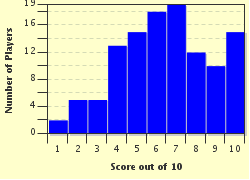Quiz Answer Key and Fun Facts
1. The first official war Israel fought was the War of Independence, against Arab States and Palestinian organizations. This was a response to the United Nations Partition Plan for Palestine, as the UN considered Jews deserved to have a state of their own. One of the many names this war has is "al-Nakba". What does this mean in Arabic?
2. The Suez Crisis, also known as the Sinai War, happened in 1956, after Egypt nationalized the Suez Canal which was owned by Britain and France. These two countries agreed with Israel an invasion of Egypt to secure the canal. As the operation was successful, the coalition won a military victory, but the United Nations knew that new conflicts could emerge after the war. Which force was created by the United Nations in order to secure the end of the Suez Crisis and prevent new conflicts?
3. In June 1967, a very short war took place between Israel and Egypt, Syria and Jordan. The Six-Day War began as Israel launched surprise attacks against Egypt after a period of high tension, which included Egyptian forces attacking Israeli targets. Which Israeli is said to have initiated the actual fighting?
4. After the Six-Day War, the international community did little to attempt to end the Arab-Israeli conflict. In 1967, yet another war started between Israel and Egypt, again involving the Sinai Peninsula and the Suez Canal area. In 1969, the Egyptian army was ready for large operations, and on March, President Nasser officially declared war, which lasted until the 1970 ceasefire. What is the name of this war?
5. The Yom Kippur War happened in October 1973 and it started with a surprise attack by the Arabs against Israeli occupied territories on the day of Yom Kippur, which is the most sacred day in Judaism, and fasting for a bit more than 24 hours is necessary in order for G-d to forgive your mistakes. The Jews, although not weak, were obviously taken by surprise since it was an atonement day. Interestingly enough, the Muslims were also celebrating an important fasting holy month. How is this holiday called?
6. A few years after the Yom Kippur War ended, another one started - the 1982 Lebanon War. This time, Israel wasn't facing Egypt or Jordan, but the Lebanese National Resistance Force, along with the Palestine Liberation Organization and of course, Syria. The war lasted for three years, ending in June of 1982. Who was the leader of the PLO at that time?
7. In 1987, the First Intifada started. The Palestinians intended to boycott the Israeli government and at the same time killed 160 Israelis by all sorts of methods and injured thousands. During the Intifada, 1,087 Palestinians were killed by the IDF, and another 1,000 were murdered by the Palestinians themselves, who claimed they were collaborators of Israel. However, what does the Arabic word "intifada" mean?
8. The Second Intifada happened between 2000 and 2005. Ariel Sharon, then Prime Minister of Israel, visited Temple Mount, which was taken as a provocation by Palestinians. In total more than 7,000 people died. What is another name for this Intifada?
9. In July 2006, the Second Lebanon War started when the terrorist group Hezbollah fired rockets at Israel, which resulted in the death of three soldiers. The military conflict ended in August 2006, with both sides claiming victory. Which country aided Hezbollah greatly during this war?
10. In 2008, the Gaza Strip was a war zone between Israel and Palestinians. The goal of Operation Cast Lead was to stop rocket fire into Israel, as rockets fired by several terrorist organizations were continually falling on Israeli cities near the borders. What is the Operation known as to Palestinians?
Source: Author
Lpez
This quiz was reviewed by FunTrivia editor
bloomsby before going online.
Any errors found in FunTrivia content are routinely corrected through our feedback system.

